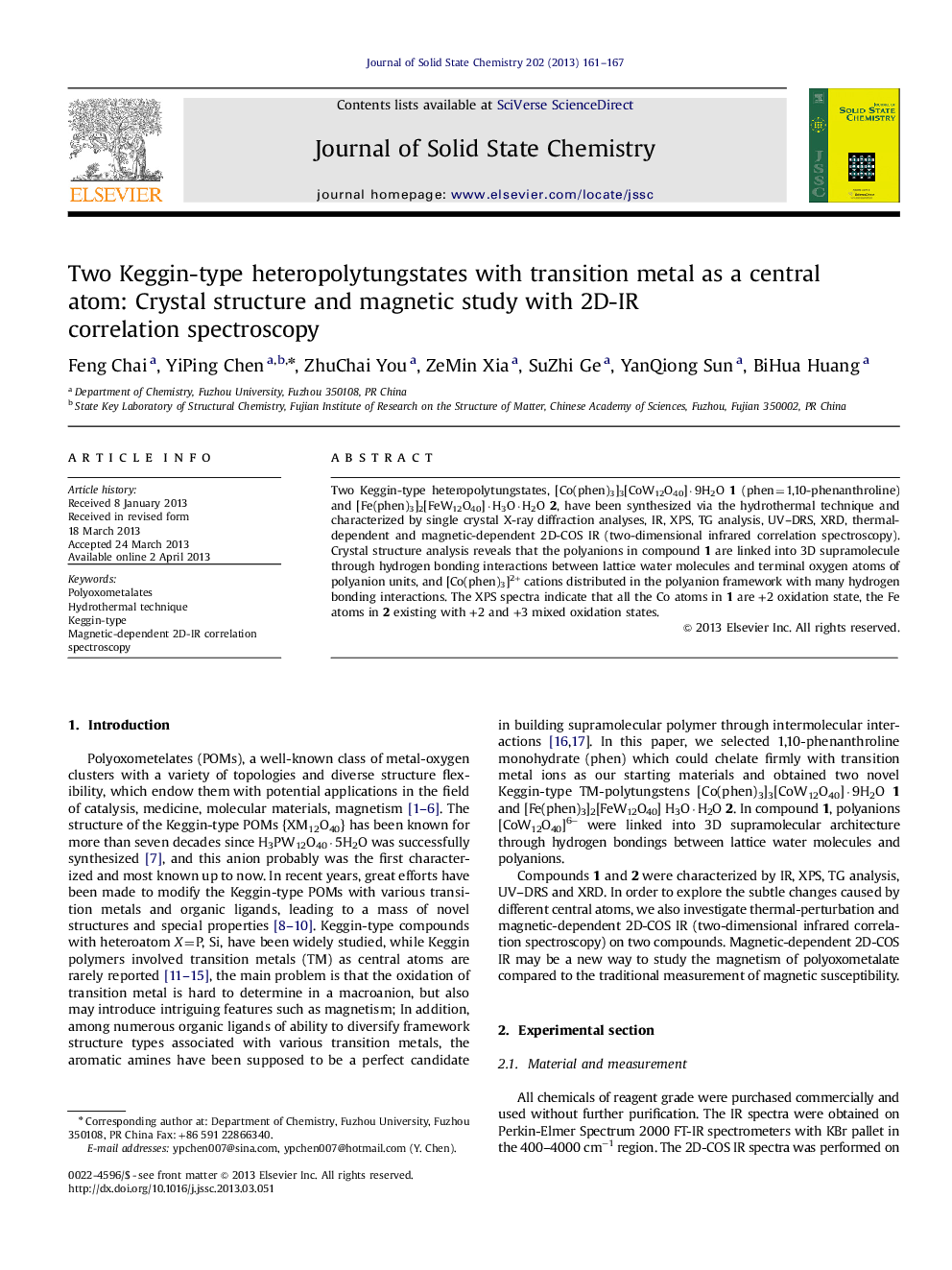| Article ID | Journal | Published Year | Pages | File Type |
|---|---|---|---|---|
| 1332261 | Journal of Solid State Chemistry | 2013 | 7 Pages |
•Two Keggin-type heteropolytungstates with transition metal as a central atom has been obtained.•Compound 1 forms into 3D supramolecular architecture through hydrogen bonding between water molecules and polyanions.•Magnetic-dependent 2D-IR correlation spectroscopy was introduced to discuss the magnetism of polyoxometalate.
Two Keggin-type heteropolytungstates, [Co(phen)3]3[CoW12O40]·9H2O 1 (phen=1,10-phenanthroline) and [Fe(phen)3]2[FeW12O40]·H3O·H2O 2, have been synthesized via the hydrothermal technique and characterized by single crystal X-ray diffraction analyses, IR, XPS, TG analysis, UV–DRS, XRD, thermal-dependent and magnetic-dependent 2D-COS IR (two-dimensional infrared correlation spectroscopy). Crystal structure analysis reveals that the polyanions in compound 1 are linked into 3D supramolecule through hydrogen bonding interactions between lattice water molecules and terminal oxygen atoms of polyanion units, and [Co(phen)3]2+ cations distributed in the polyanion framework with many hydrogen bonding interactions. The XPS spectra indicate that all the Co atoms in 1 are +2 oxidation state, the Fe atoms in 2 existing with +2 and +3 mixed oxidation states.
Graphical abstractThe magnetic-dependent synchronous 2D correlation IR spectra of 1 (a), 2 (b) over 0–50 mT in the range of 600–1000 cm−1, the obvious response indicate two Keggin polyanions skeleton susceptible to applied magnetic field.Figure optionsDownload full-size imageDownload as PowerPoint slide
